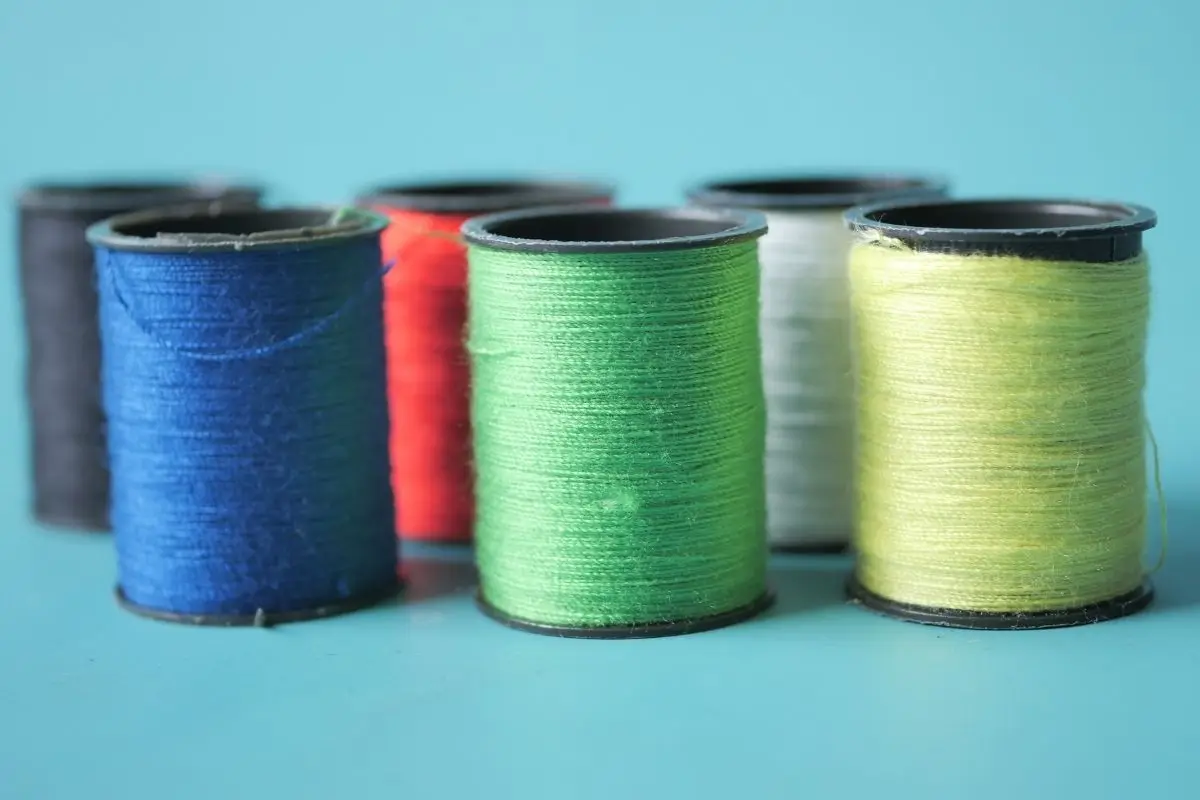Synthetic yarns have become an indispensable part of the modern textile industry, for their use spans various fields and is continuously increasing. Therefore, understanding what synthetic yarns are, how they are produced, where they are used, and their varieties is fundamental for grasping innovations in the textile sector.
Table of Contents
- What Are Synthetic Yarns?
- Synthetic Yarn Production
- Where Are Synthetic Yarns Used?
- Synthetic Yarn in Textiles
- Types of Synthetic Yarn
What Are Synthetic Yarns?
Synthetic yarns are made from man-made materials, setting them apart from natural sources. Thus, they offer unique advantages over their natural counterparts. For instance, polyester and nylon are among the most popular types. Moreover, acrylic yarns serve as an alternative to wool. Therefore, synthetic yarns are widely used in everything from clothing to home textiles. Consequently, they are tailored for diverse applications, meeting various needs. In this light, synthetic yarns’ water-resistant qualities stand out, especially in sportswear. Furthermore, their ease of care and longevity are significant benefits. Hence, synthetic yarns are frequently chosen for their practical advantages. Additionally, their quick-drying nature makes them ideal for sportswear and outdoor apparel. Thus, synthetic yarns play a crucial role in both fashion and functionality. In conclusion, their development towards more environmentally friendly practices is gaining momentum, ensuring a greener future.
Synthetic Yarn Production
Synthetic yarn production is a highly technical process, requiring specialized machinery and expertise. Consequently, petrochemical products are utilized as the primary raw materials. Additionally, these materials are melted at high temperatures to form yarn. This is why the manufacturing process demands careful control. Through polymerization, the foundation for the yarn is established. At this stage, the resulting yarns are cooled and wound onto bobbins, allowing for the production of yarns in various thicknesses and lengths. Color can also be added during production, making coloration a critical step. Therefore, synthetic yarns excel in durability and flexibility, making them suitable for a wide range of products. Continuous improvement and innovation enhance quality. Thus, the industry can better meet industrial and consumer needs. Furthermore, efforts are being made to develop eco-friendly manufacturing methods. This commitment to sustainability makes the production process of synthetic yarns both economically and environmentally significant.
Where Are Synthetic Yarns Used?
Synthetic yarns boast a wide array of applications, making them indispensable in various sectors. Consequently, they are a staple in the clothing industry, offering durability and versatility. Additionally, home textiles frequently utilize these yarns, evident in products like curtains and carpets. Sportswear benefits greatly from synthetic yarns due to their flexibility, enhancing athletic performance. In this context, water-resistant outdoor clothing relies on them for protection against the elements. Automotive interiors also employ synthetic yarns, valuing their strength for long-lasting use. Furthermore, medical supplies, including bandages and surgical sutures, often contain synthetic yarns for their reliability. Technological applications, such as conductive fabrics for touch screens, highlight their versatility. Filtration systems for water purification and air cleaning also depend on synthetic yarns, showcasing their utility in environmental conservation. Thus, the use of synthetic yarns spans from everyday clothing to advanced technological applications, reflecting their critical role in modern life.
Synthetic Yarn in Textiles
In the textile industry, synthetic yarns play a pivotal role, enriching both functionality and aesthetics. Consequently, they enable the creation of durable and versatile fabrics. Furthermore, these yarns facilitate the production of clothing that combines comfort with style. Additionally, synthetic yarns are lauded for their easy-care properties, making maintenance a breeze. This is why they are preferred for both everyday wear and specialized apparel. Moreover, the array of colors and patterns available in synthetic yarns enhances fashion diversity. In this context, their quick-drying nature is especially valued in sportswear and outdoor garments. Water-repellent properties make synthetic yarns ideal for rainwear and other protective clothing. Heat insulation features are also integral, providing warmth in colder climates. Efforts to reduce environmental impacts are ongoing, aiming for more sustainable textile products.
Types of Synthetic Yarn
Synthetic yarns, indispensable across various industries, cater to an array of needs and applications. They are celebrated not only for their versatility but also for their ability to meet specific requirements. Polyester, for instance, is favored for its durability and ease of care, making it a popular choice in many sectors. Nylon, on the other hand, offers exceptional strength and elasticity, distinguishing itself from other materials. Yet, spandex stands out for sportswear and active clothing due to its incredible stretchability. Polypropylene, distinct for its lightweight and moisture-resistant properties, adds to the diversity of synthetic yarns. This versatility ensures that synthetic yarns can be engineered for specific functions, such as UV resistance or antimicrobial properties, so innovation in their development continues to evolve, meeting new challenges and consumer demands. Therefore, the array of synthetic yarn types underscores their pivotal role in advancing textile technology and enhancing our daily lives.
Conclusion
Synthetic yarns, with their diverse types and applications, play a pivotal role in modern textiles. Arya Yarn’s commitment to quality and sustainability ensures that these materials not only meet current needs but also pave the way for future innovations in the textile industry.







